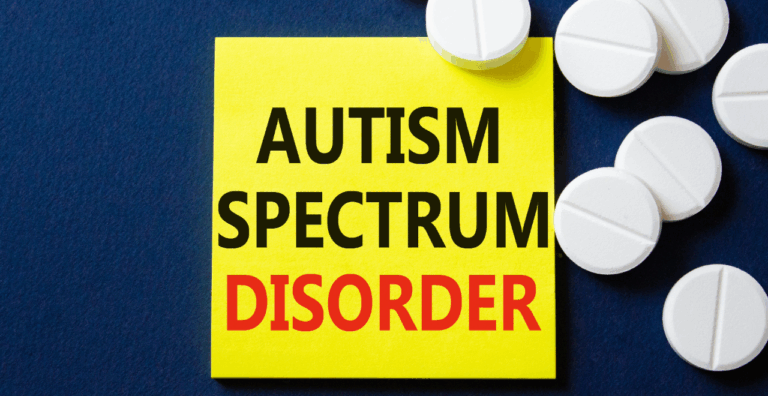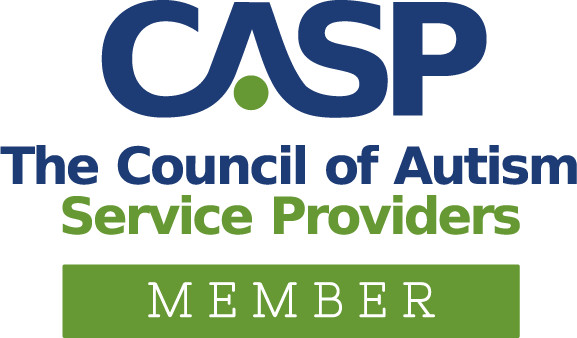Table of Contents
How Neurofeedback for Autism Is Helping Children
What if a simple, non-invasive therapy could unlock your child’s potential and improve their quality of life?
Parents of children with autism spectrum disorder (ASD) often seek treatments to support their child’s development and well-being. While Applied Behavior Analysis (ABA) therapy remains the gold standard for behavior management and skill development for children with ASD, more families are discovering that neurofeedback might also help.
Today, many ask: Can neurofeedback for autism really benefit a neurodivergent child?
In short, neurofeedback is an innovative, non-invasive approach that is showing promising results in helping children with autism. Its application shows improvements in social interactions, communication skills, and overall brain function.
This comprehensive guide by ABA Centers of America will help you understand what neurofeedback for autism is and how it works. We will also explore what the research tells us about its effectiveness for ASD.
So, keep reading to learn more about this valuable, trending topic.
Discover more about ABA Centers of America here. To read other related topics affecting neurodiverse families, visit us here.
What Is Neurofeedback Therapy?
Neurofeedback therapy is a form of biofeedback that focuses on measuring and training brain activity.
During treatment, sensors are placed on your child’s scalp to monitor brainwaves in real-time. This information appears as visual or auditory feedback on a computer screen. The visual imagery allows children to learn how to regulate their brain function.
This therapy works on the principle of operant conditioning, rewarding desirable brain activity while not reinforcing unhelpful patterns. Over time, this training helps strengthen neural connections and promotes healthier brainwave patterns.
What makes neurofeedback particularly appealing for families of loved ones with ASD is its safety profile. The treatment is entirely painless, drug-free, and carries minimal risk of side effects.
How Does Neurofeedback for Autism Work?
The neurofeedback process for children with autism typically begins with qEEG brain mapping. This mapping involves placing 19 sensors on the scalp to record electrical activity throughout the brain. The results are then compared to databases of typical brain activity patterns to identify areas that may be functioning differently.
Based on these findings, specialists develop a custom treatment plan for each child. During neurofeedback for autism, children watch engaging animations or play simple games on a computer screen while sensors monitor their brain activity.
When their brainwaves move toward healthier patterns, the screen brightens or the game progresses smoothly. When brain activity moves away from the target range, the feedback becomes less engaging.
This process helps teach children to shift their brainwaves into more optimal patterns unconsciously. Many studies have focused on reducing excessive theta waves (slow brainwaves) in areas like the frontal and central regions of the brain, which are often high in children with autism.
Benefits of Neurofeedback for Children with Autism
Research has identified several areas where neurofeedback therapy may help children with autism spectrum disorder. These include:
1. Improved Social Interactions and Communication
Multiple studies have shown that parents report significant improvements in their neurodivergent children’s social behavior and communication skills following neurofeedback treatment.
One notable study found that 60% of participants successfully learned to control their theta brain waves, leading to meaningful improvements in reciprocal social interactions.
2. Enhanced Executive Function
Executive functions like attention, cognitive flexibility, and set-shifting skills often improve with neurofeedback training. Children may show better ability to adapt to new situations, focus on tasks, and manage their behavior more effectively.
3. Reduction in Co-occurring Symptoms
Many children with autism also experience symptoms of ADHD, anxiety, or depression. Neurofeedback therapy can help address these secondary conditions, potentially reducing hyperactivity, impulsivity, and anxiety levels.
4. Long-term Benefits
Unlike some interventions that require ongoing treatment, the improvements ASD clients gain through neurofeedback therapy often persist long-term.
Understanding ABA Therapy as a Complementary Approach
While exploring neurofeedback options, many families continue to rely on ABA therapy as their primary treatment approach.
Applied Behavior Analysis is a science-backed method that focuses on observing behavior, teaching new social skills, and redirecting challenging behaviors in children with autism.
ABA therapy offers several key benefits:
- Evidence-based approach: Hundreds of studies support ABA’s effectiveness in improving communication, social relationships, play skills, and self-care abilities
- Individualized treatment: Board Certified Behavior Analysts (BCBAs) design personalized programs based on each child’s unique needs
- Skill-building focus: ABA helps children develop practical life skills and socially appropriate behaviors
- Family support: Many parents report reduced daily stress when working with skilled behavior therapists
Autism Speaks shares that the U.S. Surgeon General, the American Psychological Association, and their organization, among others, recognize ABA as an evidence-based, best-practice treatment for autism and related disorders.
How Neurofeedback and ABA Compare
Both neurofeedback and ABA therapy aim to help children with autism, but they work in different ways:
- Neurofeedback focuses on training brain activity directly, helping to normalize brainwave patterns that may be contributing to autism symptoms. It’s passive for the child and works at the neurological level.
- ABA therapy focuses on behavior modification through systematic teaching and reinforcement. It’s active and teaches specific skills while addressing core challenges and strengths.
Many families find that these approaches complement each other well. While ABA helps children learn practical skills and appropriate behaviors, neurofeedback may further support these improvements by optimizing underlying brain function.
What the Research Shows About Autism and Neurofeedback
Scientific studies on neurofeedback for autism have produced encouraging results, though researchers emphasize the need for continued investigation.
A landmark study by Kouijzer and colleagues found that children who successfully reduced excessive theta brain waves through neurofeedback showed significant improvements in social behavior according to parent reports.
The study also found correlations between brain changes and behavioral modifications, suggesting that the therapy was creating meaningful neurological changes.
Follow-up research confirms that many children could maintain these improvements over 12 months. Other studies have found positive changes in attention, executive function, and autism-related behaviors following neurofeedback treatment.
However, researchers note some important considerations:
- Not all children respond equally to neurofeedback training
- More large-scale studies are needed to establish the effectiveness fully
- Individual results can vary significantly
- Some studies show mixed results on different outcome measures
The positive aspect is that neurofeedback’s non-invasive nature means the risk to children is very low, making it a practical option to explore alongside established treatments.
Is Neurofeedback Right for Your Child?
Neurofeedback therapy may be worth considering if your child:
- Has been diagnosed with autism spectrum disorder
- Experiences challenges with attention, hyperactivity, or anxiety
- Shows differences in social interaction or communication
- Has not fully responded to other interventions alone
- Can tolerate wearing sensors on their head for 30–45-minute sessions
The therapy appears most effective for children who can sit relatively still for sessions and engage with computer-based activities. Many practitioners have found success working with children as young as 4-5 years old.
Taking the Next Step with Neurofeedback for Autism
If you’re interested in exploring neurofeedback for your child, consider these steps:
- Research qualified providers: Look for practitioners with specific training in neurofeedback for autism.
- Ask about their assessment process: Quality providers should conduct thorough brain mapping before starting treatment.
- Discuss treatment protocols: Make sure the approach tailors to the specific needs of your child.
- Consider combination treatments: Many families benefit from using neurofeedback alongside established therapies like ABA.
- Set realistic expectations: While promising, neurofeedback isn’t a cure-all, and results can vary.
Exploring All Your Options for Autism Support
For parents seeking hope and practical solutions, neurofeedback therapy offers a safe, non-invasive way to support their ASD child’s growth and well-being.
While research continues to evolve, many families have found meaningful benefits from neurofeedback for autism that make it worth considering.
So, keep researching new ways to keep your neurodivergent child feeling healthy and performing their best!
More About Autism Support with ABA Centers of America
If you are considering various forms of safe, top-tier autism support, let the experienced team at ABA Centers of America help you.
Our licensed and highly trained BCBAs will discuss all the available ABA options for your child or teen with autism and how they may benefit from them. These services include diagnostic support and family coaching. Our ABA specialists will also develop ongoing, comprehensive ABA plans that address your child’s specific goals and needs.
So don’t hesitate to schedule a consultation today with ABA Centers of America by contacting us online or calling (844) 923-4222.
Let us help your family get the autism support you need to create a brighter future.







